“Dragons of Tarkir” bring us many new exciting dragons, as well as a Planeswalker with a new type. The new spark has ignited within Narset Transcendent! She will let us recall the ability Rebound, which we first encountered in “Rise of the Eldrazi” set.
Narset is a multicolored Planeswalker. We have talked about Planeswalkers a lot when we were checking Gideon Jura out. Shortly put:
- Planeswalker is a permament type, like creature, artifact or land.
- Planeswalker cards have a unique characteristic — Loyalty, specified in the bottom right corner of the card. The characteristic defines the number of Loyalty counters that are placed on a Planeswalker when it enters the game. The number of counters may increase or decrease. If it drops to zero, the Planeswalker goes to its owner’s graveyard as a State-based effect.
- Activated abilities of Planeswalkers are called loyalty abilities, their cost is displayed as loyalty symbols. They may be activated only in one’s main phase while the stack is empty (the emblem of Teferi, Temporal Archmage removes this limitation). Only one ability of any one Planeswalker may be activated per turn ( The Chain Veil may help here). The last bottom loyalty ability is often called Ultimate. The cost of activating the ability is adding or removing Loyalty counters from it (or keeping the number, if the loyalty ability costs [0]). A Loyalty ability whose cost involves removing Loyalty counters may only be activated if there are enough counters on the Planeswalker.
- Planeswalkers fall under “Legend rule”: If a player controls two or more permanent with the same name, he or she chooses one of them, then puts all other into their owners’ graveyards. It’s a State-based effect. This rule doesn’t apply if there are two legendary permanentsrepresenting the same character of the Multiverse. but have different names: Narset Transcendent and Narset, Enlightened Master are totally legal to be controlled by one player.
- Damage dealt to a Planeswalker results in removing that many loyalty counters from it.
The only thing we haven’t talked yet is emblems. It’s time to eliminate this sad omission.
Emblem
An emblem is a very curious object in Magic. An emblem is not a card, nor is it a card type.
An emblem has no name, no color, no type etc. An emblem has abilities and no other characteristics.
An emblem stays in a special zone called the Command zone.
An emblem has a controller! If you are surprised by this fact, you need to remind yourself what control is. A player may control permanents (cards or tokens on the battlefield), spells/abilities and their copies on the stack. An emblem is neither, but it still has a controller.
An emblem is created through an ability reading “The player gets an emblem with.”. The player does not need to have the piece of cardboard with those words and a Planeswalker’s face marked on it. These items found in boosters are no more than markers — beautiful pictures to represent an emblem in a pretty way.

If an emblem has a static ability (Narset Transcendent’s ultimate ability creates an emblem with one), this ability functions constanty.
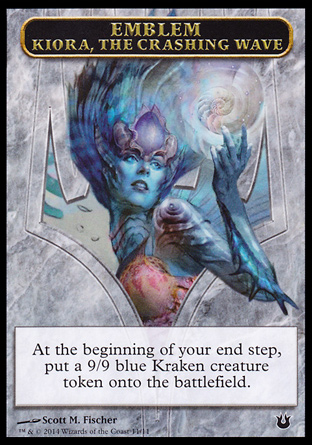
If an emblem has a triggered ability (for instance, the ultimate ability of Kiora, the Crashing Wave creates an emblem with one), the trigger is controlled by the player in control of the emblem.
An emblem is created when the loyalty ability of a Planeswalker resolves. SBA are checked before it resolves. Thus, if you activate the ultimate ability of Tamiyo, the Moon Sage with 8 loyalty counters, Tamiyo will hit the graveyard before the emblem is created, and you will not be able to return Tamiyo to your hand.
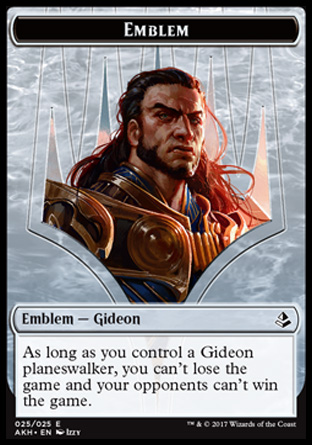
The emblem doesn’t depend on the fate of the Planeswalker, which created it.
Effect of Gideon of the Trials’s emblem asked whether on the battlefield any of planeswalker Gideon, not necessarily the one, that has created the emblem. If there are no Gideon on the battlefield, the Emblem does not disappear, its ability just has stoped functioning. As soon as some Gideon will appear on the battlefield, the ability start to work again.
In modern Magic there are currently no effects that would get rid of emblems, except restarting the game ( Karn Liberated sends his greetings) and some super-exotic sub-games like that of Shahrazad.
The ultimate ability of Narset Transcendent
Narset’s ultimate ability gives her controller an emblem with the static ability: “Your opponents cannot play noncreature spells”.
It’s derivated that after this ability resolves, your opponent won’t be able to play anything except creatures. But there are a few points of notice here related to cards that may change card types:
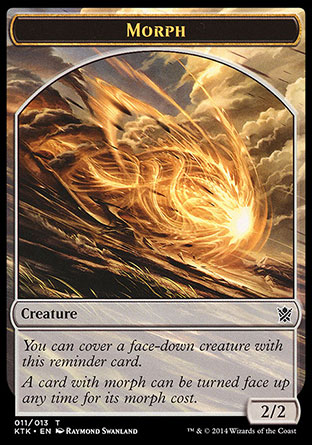
When casting a card face down using Morph, a player turns it face down before putting it on the stack, so he or she is casting a creature spell no matter what its face actually is.
You control Narset’s emblem, the opponent cannot cast a spell at Bestow cost. By the time the legality check occurs, this spell is no longer a creature spell, which makes it illegal to cast.
Gods of Theros cease being creatures on the battlefield if the Devotion of their controller is lower than a required amount. This means that a player always casts them as creature spells.

Opposite to Thassa, Rusted Relic actually becomes a creature on the battlefield if its controller controls three or more artifacts. When being cast, Rusted Relic is not a creature spell, so it may not be cast.
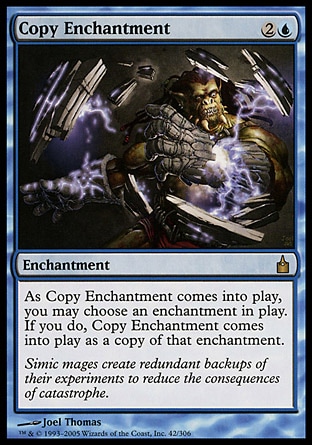
Copy Enchantment is not a creature card even though it may copy an enchantment creature on the battlefield. Your opponent may not play this card.
Phyrexian Metamorph may copy creatures or artifacts, but since it is a creature spell on the stack, it doesn’t matter what the player wishes to copy when it enters the battlefield; he or she may play it.
NB: You hopefully remember the Golden Magic rule #2:
101.2. When a rule or effect allows or directs something to happen, and another effect states that it can’t happen, the “can’t” effect takes precedence.
The effect of Narset’s emblem’s ability prohibits casting noncreature spells, which overlaps any effects that allow doing so.
Narset Transcendent’s second ability
When the second ability resolves, a delayed trigger is created which will go off at the point of paying the cost of the next instant or sorcery spell you cast that turn from your hand.
“When you cast your next instant or sorcery spell from your hand this turn, it gains Rebound.”
When is the signal word of a triggered ability which goes off when the trigger event is met:
you cast your next instant or sorcery spell from your hand this turn
- The delayed trigger is not an ability of Narset, so it doesn’t matter if she is on the battlefield or not, the trigger will go off regardless when the trigger event is met.
- The trigger will go off only when the next spell is cast and only if it is cast on the same turn.
- The trigger will go on the stack on top of the spell that caused it to go off.
- The trigger resolves even if the spell leaves the stack (is countered or exiled), but it will do nothing on resolution. It will not retrigger again when casting the next spell. If you can activate Narset’s ability again ( The Chain Veil), a new delayed trigger is created, which will wait for the next time the trigger event is met.
- The trigger will only go off if the spell is cast, and cast specifically from your hand.
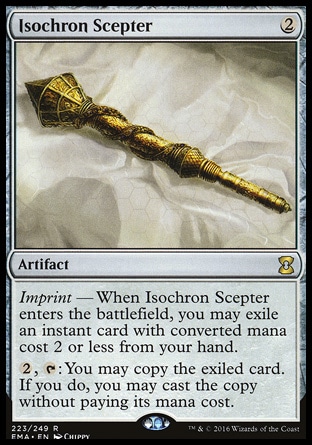
Even though the copy of a spell imprinted on Isochron Scepter is cast, it is not cast from your hand. The trigger will ignore this.

When Mindleech Mass’ trigger resolves you cast a card, but from your opponent’s hand, not yours. The trigger will not go off.
An instant or sorcery spell cast from exile through Cascade will not cause the delayed trigger to go off.
it gains Rebound. — is the effect of the trigger which we get only when it resolves. Unlike effects (compare this with Soulfire Grand Master’s activated ability), triggers never impact the game immediately. They go on the stack, then resolve over some time. They may be countered with the likes of Stifle, then the effect is null. The effect of this trigger grants the ability Rebound to the spell. Let us take a look at it.
Rebound
702.87a. Rebound appears on some instants and sorceries. It represents a static ability that functions while the spell is on the stack and may create a delayed triggered ability. "Rebound" means "If this spell was cast from your hand, instead of putting it into your graveyard as it resolves, exile it and, at the beginning of your next upkeep, you may cast this card from exile without paying its mana cost.".
The static ability of Rebound creates a replacement effect that impacts the last step of a spell’s resolution. Instead of going to the graveyard, the spell card is exiled. Besides, a delayed trigger is created. The card goes to exile directly from the stack, it does not hit the graveyard, so no related triggers, such as Bloodchief Ascension, go off.
If a card with Rebound leaves the stack before that, it cannot be exiled. In that case, the delayed trigger isn’t created:
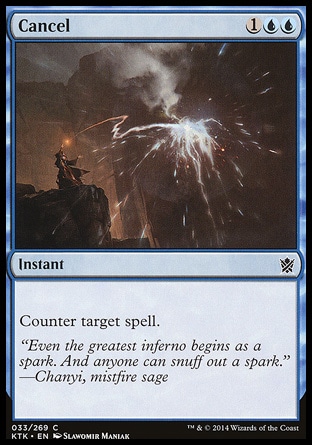
When countered, a spell card goes to the graveyard. This happens before resolution.
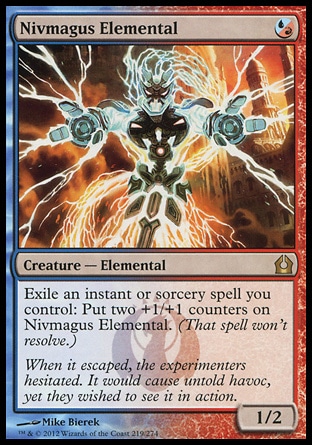
A spell may be exiled from the stack before it resolves.
In these cases the spell doesn’t even begin to resolve, so clearly, the effect of Rebound that would send the card to exile and create a delayed trigger doesn’t appear.
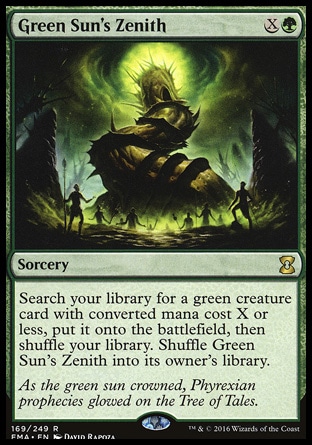
A spell ability may shuffle the card into the library or exile itself as part of resolution, before it is time to send it to the graveyard. In this case Rebound doesn’t have any effect, the delayed trigger is not created.
If you cast a spell with Rebound from any zone other than your hand, Rebound doesn’t function:
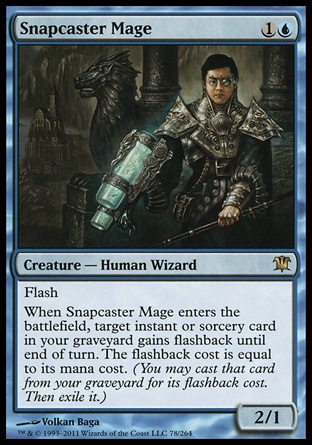
When using Flashback, the card is cast from the graveyard.
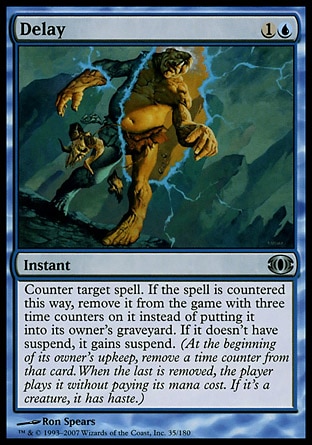
Through Suspend, the card is cast from Exile.
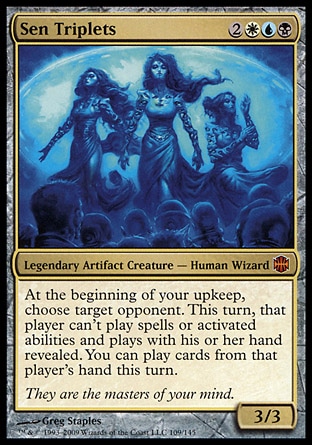
Through the ability of Sen Triplets, the card is cast from an opponent’s hand.
If two replacement effects are applied to moving the card to the graveyard, its controller chooses the order in which they will apply:
With an opponent’s Leyline of the Void on the battlefield, you may exile the card either with the effect of Rebound, or with that of Leyline. In the latter case it will not be “replayable”.

If you pay the cost of Buyback, you may either return the card to your hand through Buyback, or exile it through Rebound — your call.
When the effect of the third ability of Soulfire Grand Master is created, you have a choice too: return it to your hand or exile through Rebound.
Each instant or sorcery spell with Rebound played from your hand must be exiled (unless there are other replacement effects, see above) instead of being put into the graveyard, this is not optional.
At the beginning of your upkeep, all triggers with such a trigger event will go off, including delayed triggers from Rebound. You may place these triggers onto the stack in any order you choose.
When the delayed trigger of Rebound resolves, you may decide whether to cast it from exile or not. If you choose not to, or you cannot due to any limitations (see below), or because there are no legal targets for the spell, then nothing happens upon the trigger’s resolution. The card remains exiled, and you need some very special effects to get it back from there. The same thing happens if the delayed trigger is countered before resolving, for instance, with Voidslime.
Since the trigger’s effect allows casting the exiled card, you may cast a sorcery spell this way even though it is not your main phase, and even though the stack isn’t empty (casting this spell occurs in process of resolving the delayed trigger). However, restrictions on casting cards still apply:
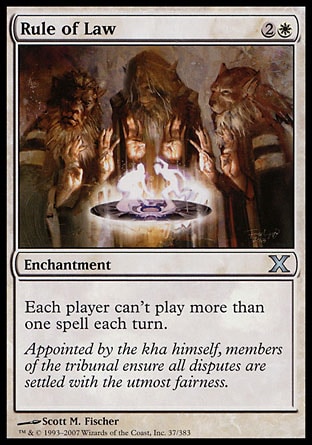
If Rule of Law is on the battlefield and you have cast a spell, you may not cast any other spells.
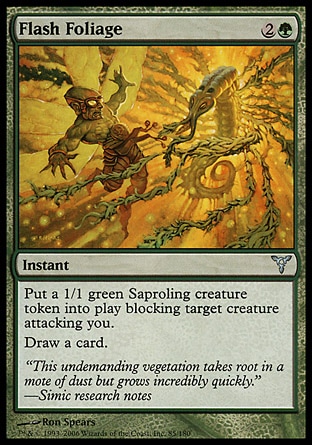
The Oracle text reads “Cast Flash Foliage only during combat after blockers are declared”. You cannot cast Flash Foliage during your upkeep.
702.87b. Casting a card without paying its mana cost as the result of a rebound ability follows the rules for paying alternative costs in rules 601.2b and 601.2e-g.
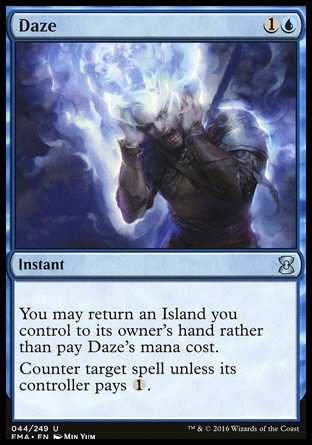
When casting a card “without paying its mana cost” you use an alternative cost, so you may not pay any other alternative cost.

You may not choose the value of X in the mana cost other than 0.
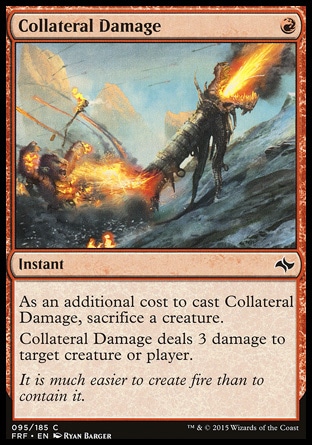
You must pay all additional costs and you may pay any additional costs.
The card cast when the delayed trigger resolves goes to your graveyard. The same thing happens if the rebound spell is countered.
Finally, if a card has two instances of Rebound it makes no difference:
702.87c. Multiple instances of rebound on the same spell are redundant.
Narset Transcendent’s first ability
Look at the top card of your library. If it’s a noncreature, nonland card, you may reveal it and put it into your hand.
Moving a card from your library to your hand through the effect of Narset’s first loyalty ability is not drawing a card:
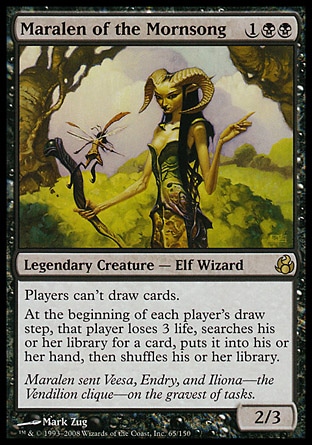
The effect of Maralen of the Mornsong cannot prevent you from putting a card into your hand.
You cannot use Dredge instead of putting a card into your hand.
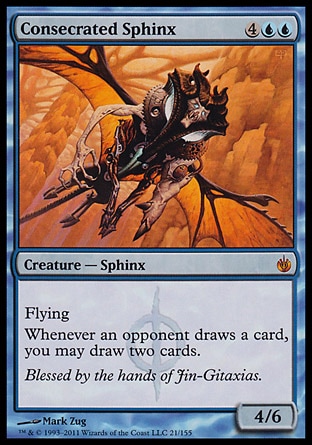
The ability of an opponent’s Consecrated Sphinx will not trigger.
- ⇑ Unless they are mana abilities, which don’t use the stack and resolve immediately.
- ⇑ You may cast a spell with Flashback three times this way. First, you play it from your hand normally, with Narset’s second ability activated beforehand. After resolving, it will hit Exile through Rebound. At the next upkeep it may be played again through Rebound, which will send it to the graveyard upon resolution. Finally, you play it from Exile with Flashback, which will result in the card being exiled permanently.
- ⇑ Actually, if you cast the spell normally, and then cast the spell exiled with Rebound during your next upkeep without paying its mana cost, you will be able to pay the Buyback cost to return it to your hand even after “replaying”.
- ⇑ The rules do not prohibit casting sorceries at any point of time other than the main phase of their owners (unlike playing lands). The rules allow casting a sorcery spell in one’s main phase when the stack is empty. So, any effect that allows or instructs to cast a spell, allows us to cast the sorcery at any other time.
Translated by Witas Spasovski


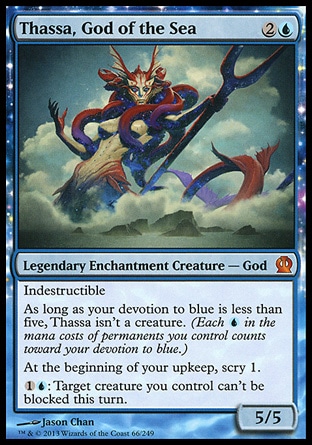

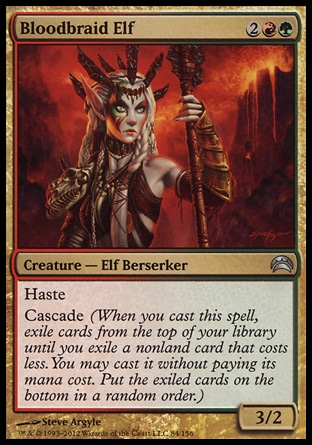
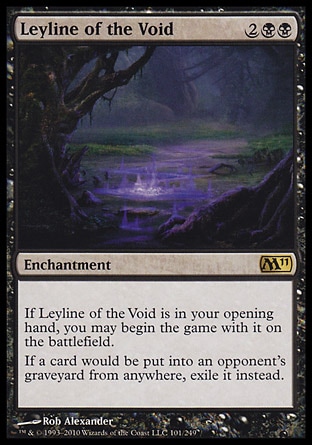
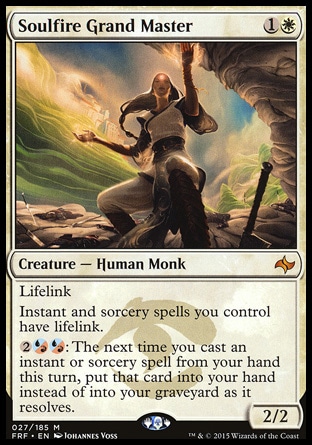
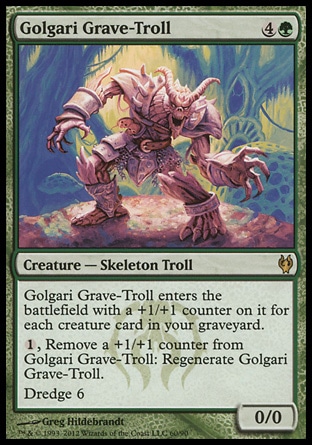
Oracle Text:
Legendary Planeswalker — Narset
+1: Look at the top card of your library. If it’s a noncreature, nonland card, you may reveal it and put it into your hand.
−2: When you cast your next instant or sorcery spell from your hand this turn, it gains rebound.
−9: You get an emblem with “Your opponents can’t cast noncreature spells.”